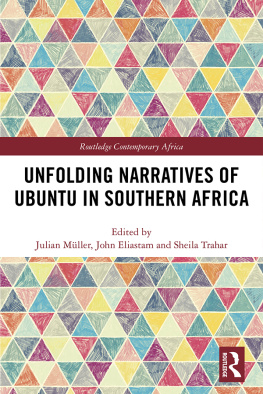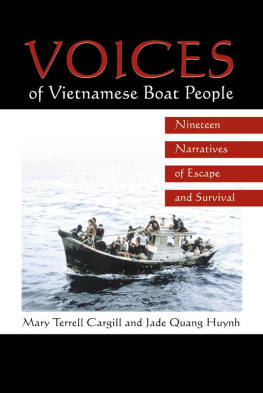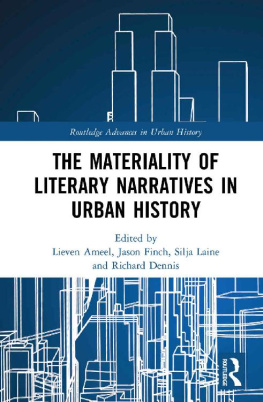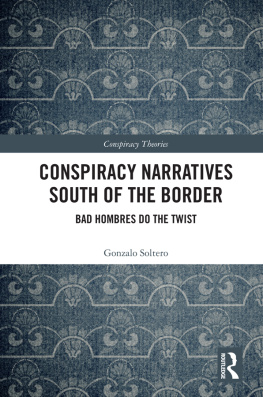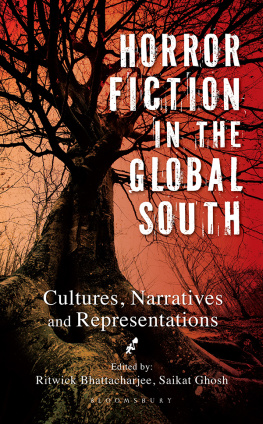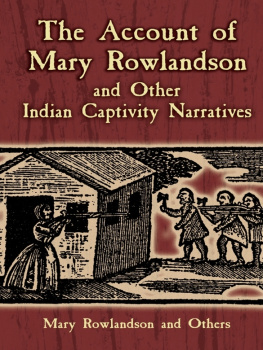The University Press of Mississippi is the scholarly publishing agency of the Mississippi Institutions of Higher Learning: Alcorn State University, Delta State University, Jackson State University, Mississippi State University, Mississippi University for Women, Mississippi Valley State University, University of Mississippi, and University of Southern Mississippi.
www.upress.state.ms.us
The University Press of Mississippi is a member of
the Association of University Presses.
Copyright 2019 by University Press of Mississippi
All rights reserved
Manufactured in the United States of America
First printing 2019
Library of Congress Cataloging-in-Publication Data
Names: Weaks-Baxter, Mary, author.
Title: Leaving the South: border crossing narratives and the remaking of Southern identity / Mary Weaks-Baxter.
Description: Jackson: University Press of Mississippi, [2019] | Includes bibliographical references and index. |
Identifiers: LCCN 2018021899 (print) | LCCN 2018025249 (ebook) | ISBN 9781496819604 (epub single) | ISBN 9781496819611 (epub institutional) | ISBN 9781496819628 (pdf single) | ISBN 9781496819635 (pdf institutional) | ISBN 9781496819598 (cloth) | ISBN 9781496819765 (pbk.)
Subjects: LCSH: Rural-urban migrationUnited StatesHistory20th century. | Migration, Internal, in literatureHistory and criticism. | African AmericansMigrationsHistory20th century. | Southern StatesPopulationHistory20th century. | Migration, InternalUnited StatesHistory20th century.
Classification: LCC HB1971.A3 (ebook) | LCC HB1971.A3 W43 2019 (print) | DDC 307.2/409730904dc23
British Library Cataloging-in-Publication Data available
ACKNOWLEDGMENTS
This book, Leaving the South: Border Crossing Narratives and the Remaking of Southern Identity, tells a personal story I share with millions of other Southerners who left the South to settle in other parts of the country. Because much of what I discuss here is concerned with that journey, this book is, in many ways, one Ive been working on all my life, and I have many people to thank for their help along the way.
Over the years my work has benefited greatly from the connections and friendships I have made through attendance and presentations at various conferences, including the Southern Women Writers conference at Berry College and meetings of the Society for the Study of Southern Literature and the Robert Penn Warren Circle. Early on in the writing process for this book, William Andrews and Fred Hobson were gracious in writing letters of support for a research grant for the project. My thoughts on much of what I discuss here has evolved through work on various research projects, including two anthologies that I coedited with Carolyn Perry. Im ever grateful for her friendship.
Many people at Rockford University were a part of helping me get this book to press. The university was generous in providing support through the Faculty Development Committee and the Hazel Koch endowment, including funds in support of a sabbatical, expenses for conferences, and assistance with the research, manuscript preparation, and permissions fees. My colleagues and friends have also been quite encouraging and supportive. Faculty in the Gender Studies program, especially Stephanie Quinn, Tara Wood, Sharon Bartlett, and Belinda Wholeben, were instrumental in helping me think through the conceptual framework for my chapters on gender. Our discussions for various gender studies projects have helped me to grow as both a scholar and a teacher. John Burns introduced me to the work of Juan Felipe Herrera and helped me in thinking through my discussions of crossings along the Mexican-US border, and my department chair, Bill Gahan, read an early version of my introduction and made encouraging advice. I owe a special debt of gratitude to Catherine Forslund and Chris Bruun for the time and energy they each have taken to offer suggestions for research and to read and comment on my manuscript, and for our lunchtime discussions at Flatlanders on writing, work, and life in general.
As a professor at a small liberal arts university, over the years I have taught courses in such a wide range of areas that it is difficult to sum them up here. Although Im especially grateful to my students enrolled in my Southern Literature course in spring 2017 who helped me wrestle with some of the issues of the final chapter of this study, my students in a broad range of classes from American Literature and Gender Studies to Rhetoric and Writing were part of classroom discussions that helped me formulate many of the ideas that came together to form this book. Two students, Meghan Peper and Kylee Bear, also worked for me as research assistants, tracking down sources and double-checking quotations.
Staff at Rockford University helped tremendously in my final preparations of the manuscript, including Jeannette Blum, who provided secretarial assistance. Pam Ward and Kelly James, director of Howard Colman Library, both took time to help me with scans of illustrations for this book, and Audrey Wilson was patient and helpful in locating interlibrary loan resources for me.
Family members, too, have been supportive and encouraging. The networks of the Baxters, the Lindsays, the Blacks, and the Suhrs on my husbands side and the Weakses, McMahans, Bayers, Reeds, Corgans, and Wrights on my side of the family have always been there for me, sending me articles on Southern Literature via the Internet and asking me how my writing was coming along. My parents, Tom and Elizabeth Weaks, have been steadfast in their support for me, and my sister Becky Brandvik and her husband, Neal, opened their home to me for visits where we talked about the South, Southern politics and history, and literature.
Most of all, I want to thank my husband, Brent, and our son, Andrew, who have been patient in giving me time and space to work, have made many a trip back down South with me, and have literally taken the journey of writing this book with me. Im here in the Midwest and not back down South because of the life we have built here together in northern Illinois. My hope for Andy, who completed his college applications as I completed my final revisions on this book, is that during this next stage of his life, he will discover a career that brings him joy and meaning. For Brent and Andy and our family life together, I will always be grateful.
LEAVING THE SOUTHINTRODUCTION
Borders and Border Narratives
The drive into town isnt very farno more than five miles. My family and I live on the outskirts of the village of Roscoe, hometown to NASCAR driver Danika Patrick and a bedroom community to the larger, more urban Rockford. The drive is one I make almost every day for drop off and pick up at my sons school, and for trips to the grocery store and the public library. Spring of 2017 a flag appeared at one of the houses along my route: one-half US flag on the hoist side and one-half Confederate flag on the fly end. The flag has been flying there for months now. This isnt the first time Ive seen a Confederate flag in our community. It wasnt too long ago that another fellow living on my route would fly it, and kids in the truck club at my sons school sometimes fly it from the backs of their pickups. Perhaps what mightor might notbe surprising is that I live in northern Illinois, near the Wisconsin state line, not far from the suburbs in the outer reaches of Chicagoland. Ive seen Confederate flags flown in the Midwest before, but they continue to startle me when I see them, and this new flagthis melded flag that sets the US flag alongside the Confederateleaves me troubled. Can there really be such a thing? On the Internet, I find that I can easily purchase one of these flags as well as a license plate, a beach towel, and a rear window graphic emblazoned with its image.



